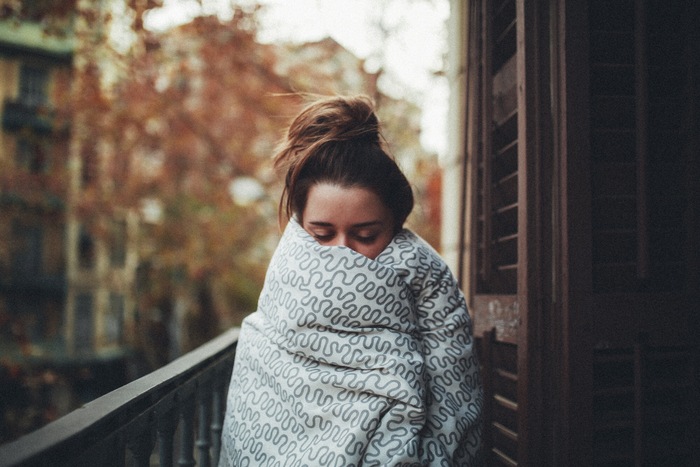Key points
- Fall season increases exposure to several common illnesses including the flu, seasonal allergies, common cold, and sore throat.
- Prevention is the best method of protection against these illnesses, with measures such as hand washing and flu shots being effective.
- The flu, a respiratory virus, can lead to severe illnesses like pneumonia and bronchitis, and annual vaccination is recommended.
- Seasonal allergies, while not an illness, can cause discomfort, and can be managed by monitoring pollen count and air quality.
- If you fall sick during the fall, consider going to an urgent care center rather than the ER as it's more convenient, less expensive, and typically has shorter wait times.

Fall can be a magical time—crisp air, colorful trees, and holidays galore. It can also be a time when your immune system is exposed to a number of bacteria and viruses that weren’t a concern in the summer. Especially with children heading back to school, many common fall illnesses will be ramping up once again.
As with any kind of communicable illness, prevention is the best method of protection. Some simple measures can help you keep yourself, your family, and those around you free from unpleasant health conditions. Below, learn about four of the most common illnesses that happen during fall, along with tips for preventing them from MedlinePlus and the CDC:
The Flu (Influenza)
Ah, the dreaded flu. Come October, flu season will be in full swing and will last all the way through May. It's important to note that the flu is not the vomiting bug that causes symptoms like nausea and diarrhea. That type of stomach bug is commonly caused by norovirus, a gastrointestinal virus that also spreads easily during winter months. Influenza, however, is a respiratory virus you really want to prevent, according to the CDC—they also note that the flu can turn into a more severe illness, such as pneumonia or bronchitis. There have also been reported deaths from the flu, according to the CDC.
Flu Symptoms
Symptoms of the flu, according to MedlinePlus, include:
-
Sudden, excessive fatigue
-
Body aches
-
Headache
-
Chills
-
Fever
-
Sore throat
-
A persistent cough
-
Tightness of the chest
-
Wheezing and congestion
-
Diarrhea, nausea, and vomiting
- Ear infections
How to Prevent the Flu
The flu is caused by a virus that spreads from person to person. The cooler weather and close proximity to other children at school make the flu more likely, according to the CDC. The best method of prevention for the flu is to get the flu shot every year.
Seasonal Allergies
While technically not an illness, people who suffer from fall allergies, also known as seasonal allergies, would agree that the symptoms of fall allergies feel a lot like being straight-up sick. In the fall, mold spores and ragweed are the most common allergens present in the air.
Seasonal Allergy Symptoms
Symptoms of seasonal allergies, according to the CDC, include:
-
Runny nose
-
Stuffy nose
-
Sneezing
-
Temporary loss of smell
-
Headache
-
Fatigue
-
Sore throat
-
Coughing and wheezing
-
Snoring
-
Watery eyes and itchy eyes
-
Ear congestion
-
Itchy sinuses or throat
-
Postnasal drainage
- Ear infections
- Fever (rare)
How to Prevent Seasonal Allergies
There’s no cure for seasonal allergies but they can be prevented and managed relatively easily, according to the CDC. The best ways to prevent seasonal allergy symptoms are:
-
Check the daily pollen count
-
Check your city’s air quality report before spending time outside
-
Keep your car and home windows closed
-
Take a shower after spending time outside
Common Cold
There are more than 3 million cases of colds each year, according to the CDC—hence the “common” in the phrase. Most of these colds occur in the autumn season when more people are gathered near each other indoors. Colds can last anywhere from a few days to a few weeks and are highly contagious. Colds are spread through skin-to-skin contact, saliva, touching contaminated surfaces, and airborne respiratory droplets.
Common Cold Symptoms
Recognizing the symptoms of a common cold is crucial for early intervention and effective management. While cold symptoms can vary in intensity and duration, they typically manifest gradually and may last anywhere from a few days to two weeks, according to MedlinePlus. Being aware of these signs can help you take appropriate actions to alleviate discomfort and prevent the spread of the virus to others.
Here are some of the most common symptoms associated with a cold, according to MedlinePlus:
-
Runny or stuffy nose: Nasal congestion and discharge are hallmark signs of a cold.
-
Sore throat: A scratchy or irritated throat often accompanies the onset of cold symptoms.
-
Coughing: A persistent cough may develop as your body attempts to clear mucus from the airways.
-
Sneezing: Frequent sneezing can occur as your body reacts to nasal irritation.
-
Headache: Mild to moderate headaches can result from sinus pressure or congestion.
-
Body aches: Generalized aches and pains may occur as your immune system responds to the viral infection.
-
Fatigue: Feeling unusually tired or fatigued is common as your body works to fight off the virus.
How to Prevent a Common Cold
Unlike the flu, there’s no vaccine available for a cold. That’s largely due to there being so many different viruses that can cause a cold, according to MedlinePlus. They explain that your best methods of prevention for colds are similar to preventing the flu:
-
Wash your hands before eating, after using the restroom, and periodically throughout the day
-
Cover your nose and mouth when you cough or sneeze
-
Avoid crowded spaces when possible
-
Get enough sleep, eat a balanced diet, and try to keep your stress levels low—these lifestyle factors that can affect your immune system’s ability to stave off a cold
Sore Throat
As the air turns cooler, you may notice your throat feeling scratchy. Soon, that could turn to a full-blown sore throat, according to MedlinePlus. While it’s true that a sore throat can be a symptom of a cold, the flu, and allergies, it’s also an illness all on its own. It could be strep throat—or just soreness caused by changing weather and so many viruses in the air. Did you know that sore throats are almost always caused by viral infections, according to the CDC?
Sore Throat Symptoms
A sore throat is a common symptom that often accompanies the onset of a cold and can be quite uncomfortable. It can range from a mild scratchiness to severe pain, making swallowing and speaking difficult. Understanding the specific symptoms associated with a sore throat can help you identify whether it's part of a cold or a sign of another condition.
Here are some common symptoms that may accompany a sore throat during a cold, according to the CDC:
-
Dry throat: A feeling of dryness or itchiness in the throat.
-
Pain when swallowing: Discomfort or pain experienced while swallowing food or liquids.
-
Redness or swelling: Noticeable redness or swelling in the throat area.
-
White patches: Presence of white patches or spots on the tonsils or throat.
-
Hoarseness: Changes in voice quality, making it sound raspy or strained.
-
Coughing: A persistent cough that may irritate the throat further.
-
Fever: A mild fever may accompany the sore throat as part of the body’s response to infection.
-
Swollen lymph nodes: Tenderness or swelling in the lymph nodes located in the neck.
How to Prevent a Sore Throat
-
Use an indoor air humidifier — Putting moisture back in the air can help keep your throat from feeling sore in the fall.
-
Wash your hands, cover your mouth, and avoid crowded spaces — These things may seem unrelated but can help prevent the spread of contagious viral infections that cause sore throats.
-
Don’t share food, drink, or utensils — Sharing is caring, except when it comes to infections. Avoid this all the time but especially in the fall and winter when contagious illnesses are at their peak.
Go to urgent care if you fall sick during the fall
For minor illnesses, urgent care is a much better option than the ER and is more convenient than waiting for an appointment at your doctor’s office, according to MedlinePlus. Especially if you use Solv to make an appointment, you’ll be seen a lot faster — most patients wait less than 20 minutes to see a medical provider. Urgent care is also a lot less expensive. On average, out of pocket urgent care visits cost $50. At the ER, visits average $278. For minor, acute illnesses, a trip to urgent care will get you answers and relief a whole lot faster than the ER, and at a fraction of the cost.
FAQs
What are the common illnesses during the fall season?
The common illnesses during the fall season include the flu, seasonal allergies, common cold, and sore throat.
What are some ways to prevent these common fall illnesses?
Prevention methods include regular hand washing, getting an annual flu shot, avoiding crowded spaces, and monitoring pollen count and air quality.
What is the best method of preventing the flu?
The best method for preventing the flu is to get the flu shot every year.
Are seasonal allergies considered an illness?
No, seasonal allergies are not technically an illness, but they can cause symptoms that feel like being sick.
What should I do if I fall sick during the fall?
If you fall sick during the fall with minor illnesses, it's recommended to visit an urgent care center rather than the ER for faster and less expensive care.
How can sore throats be prevented?
Sore throats can be prevented by using an indoor air humidifier, washing your hands, covering your mouth, avoiding crowded spaces, and not sharing food, drink, or utensils.
What should I do if I fall sick during the fall?
If you fall sick during the fall, it is recommended to go to urgent care. Urgent care is a much better option than the ER and is more convenient than waiting for an appointment at your doctor’s office.
What is the average cost of an urgent care visit?
On average, out of pocket urgent care visits cost $50. This is significantly less than the average ER visit, which costs $278.









